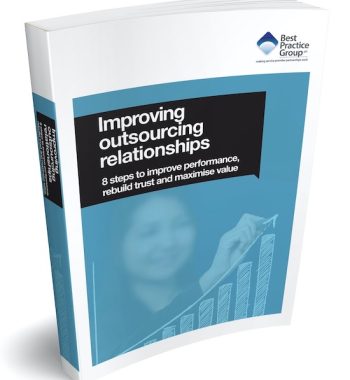 How to plan a negotiation in an exit strategy? Many would assume that all that’s needed is to follow the roadmap set out in a contract or to prove some deviation from a contractual obligation so then the relationship could be dissolved to be replaced with another more capable of achieving the end goals for the service.
How to plan a negotiation in an exit strategy? Many would assume that all that’s needed is to follow the roadmap set out in a contract or to prove some deviation from a contractual obligation so then the relationship could be dissolved to be replaced with another more capable of achieving the end goals for the service.
Unfortunately, life is not that simple. If you find that, despite all reasonable efforts to remedy the position, your relationship has hit an immovable barrier and you evaluate that it is time to leave old partnerships behind you in favour of new, then how you approach your negotiation will be vitally important to the success of your exit strategy. To enter those negotiations without adequate preparation could not only be very costly, but may well leave you in a far worse position.
We have talked in recent articles about the clearest moments in an outsourced relationship when understanding how to negotiate is most useful – these moments are when entering into your relationship, when looking to achieve better results from your relationship, and at contract renewal – but arguably, it is at the point of an early exit that your finely tuned negotiation skills will be tested most. For it is at this point, with emotions running high, fear of loss, ego and reputation at stake, that parties fight their hardest.
We’ll take it as read, for the sake of this article, that you have investigated every avenue to repair material issues with the relationship that have developed to bring you to this point. We have spoken at length in other pieces about the cost of an early exit from your relationship in terms of both finances and time. It goes without saying that this is not something to be taken lightly, always seeking any way of repairing bridges before coming to the conclusion that there is no way back before choosing this road.
That already decided, let us look a little closer at what makes for good negotiation.
Negotiation is about (a) understanding the facts (the non-subjective ones), (b) the objectives of all those involved – in particular, your provider, (c) the emotions that are likely to be attributed and (d) being empathetic in communicating your message so that it can be positioned in a way that all about you who can be evidenced as being ‘in the wrong’ can save face.
It is a blend of self-belief and conviction in the evidence you possess. If evidence is collated correctly and without ambiguity – detaching the emotion, the manner in which you communicate this evidence, is critical. Being assertive – not condescending – allowing the other party a little ‘wriggle room’ and helping them understand the key messages they need to take back to their team, goes a long, long way in accelerating an agreement.
This is not something only those born to these natural gifts can master. Anyone who can detach themselves from emotion and ‘self-protection’ in search of the facts, and can objectively assess those facts, can train themselves to be more confident, to enunciate and articulate themselves in a way that commands belief.
You can have all of the bluster and demeanour in the world, but this is nothing without the primary element that the rest of this article focuses on – evidence-based knowledge.
6 ways evidence-based knowledge can help you win the negotiation battle
Preparation, preparation, preparation. Knowledge of your evidence is your ace in the hole, your big guns. How well you understand your current evidence, your contract, your supplier’s motivations and contributions, their representations and your own expected outcomes will mean the difference between a successful and a failed negotiation for concluding an early exit to a complex relationship.
What follows are the six areas that from our own experience after over fifteen years of giving evidence as ‘expert witnesses’ in court and assisting both sides in their outsourced contract relationship development enhancement and detachment. You should consider maximising your knowledge on before you initiate any exit negotiations.
1. Why you are looking to exit
To know how to approach your exit negotiations you must first determine your reasoning for exiting your relationship – your business outcome if you will. Once you have decided this, are you looking to exit for ‘convenience’ (no fault – life has just moved on and the relationship is no longer, nor can be made to be, valid) or due to poor performance.
The former can be difficult from a financial perspective, because you are simply saying that the relationship no longer suits you as well as it did and you want out. It is likely to cost you more to exit, but the one advantage is that if you negotiate a mutually acceptable figure then this could offer the swiftest solution.
Exiting due to poor performance, providing you have approached gathering your evidence in the right manner is, however, one that can be argued far more effectively from a financial standpoint. Gather your project knowledge (see two, three and four below) so you can negotiate your way to minimising any exit costs, even, potentially, those mentioned in your contract.
2. What your contract contains
Your pre-negotiation research must include a deep-dive into your contract clauses. You need to understand that document inside and out – what you’re and the vendor’s obligations are, what costs/fees have been agreed to for exit, and what wriggle room (for both sides) has been allowed for through ambiguity. Contracts are rarely finite documents, ambiguity is the door through which opportunity passes for one party or the other. You need to identify where these contractual weaknesses exist and look at a fair and equitable way in which to leverage them.
You should also evaluate how the other side might look to exploit this ambiguity with their arguments in an attempt to undermine your evidence. Once this has been done it’s important to appreciate, as clearly and numerically as possible, how this document outlines the representations your supplier made to you at the outset, and how your current position on the life cycle of the project aligns with both contractual and representational expectations. The further from agreed milestones they are or have been, and to which your evidence supports them, the stronger your leverage.
3. What your leverage is going to be
Do not enter into negotiations blind. While you cannot know what you’ll be up against when you walk into your meeting, you can attempt to cover the major bases with your knowledge of the strengths and weaknesses of your case – promoting strengths through evidence and minimising weaknesses on a fair and equitable basis.
Build your case with clear arguments. Include dates, agreed milestones, actual figures, documented proof, communications that show agreements, behavioural breaches, and so on. Evidence your argument to give your negotiation strength. Essentially, where are you now compared with where you should be to prove performance slippage.
4. How you intend to proceed
Craft the venue for your negotiations. Will it be informal negotiations, arbitration, mediation or litigation? Develop your negotiation strategy based on the form they will take place in. Do you have a plan for your services – will you be bringing them back in-house or outsourcing them to another strategic partner? If the latter, do you have a clear requirements document that has quantified your business outcomes to avoid future misunderstandings? Is there another provider you have in mind and how far have you proceeded with your due diligence with them?
Understanding, not just guessing, how your future plans for the services in dispute should unfold and that they are superior to the situation you are currently in can provide additional confidence in negotiations. Essentially, have a post relationship plan of action in place before you negotiate. It does not need to be a full plan, but a clear outline would be useful at least. Discussions with other third party companies may also reveal additional evidence as to how the industry handles things differently which helps to balance your evidence.
5. What good looks like
As time moves on in a strategic relationship, two things can happen. Firstly, if your contract does not go through a regular review and update programme (at least once every six months) it may quickly become out of date and impractical. Your appreciation of the needs of your changing business outcomes and the realities of your supplier’s abilities and motivations will be revealed over time, and building this evolved knowledge into your contracts helps you to achieve better value in your relationships.
Secondly, as time moves on so does technology, and social/customer/client expectations, so what you once aspired to achieve as an outcome must adapt. Essentially, what good looks like can be outgrown, outdated or forgotten as a relationship progresses. No matter whether you will ultimately look to bring the services in-house or outsource elsewhere, you need to develop a clear understanding of what good looks like to you right now. This will help you to communicate expectations more clearly, to avoid past mistakes, and to recognise additional evidence for your negotiation associated with expected flexibility that has remained unrealised during the course of the relationship.
6. Do you intend to continue to work together – but in a more limited fashion?
Not all early exits are full exits. Some will be partial. Just because your supplier/provider is unable to meet expected targets in one area does not mean they are failing across the board. Services are outsourced to take advantage of specialist sector expertise and it is entirely possible that there are some things your supplier is better at than others.
Because there may be some tasks they will struggle with, and some that turn out to be not as profitable as they had seemed, this may lead to a more lacklustre attitude that affects the productivity of the entire relationship. A partial early exit requires an entirely different negotiation style as you need to find a mutually acceptable solution – a good relationship must be maintained despite the strain of partial separation.
These points and many more are mentioned in our white paper on Failed Outsourcing Relationships where we look into a broad range of solutions as to how to repair your bridges so you do not have to get to this stage. However, where a breakup is absolutely necessary, remember that knowledge of your evidence is king, and if you hope to negotiate your way to a satisfactory solution you need a strategy, a plan of action, and intricate, detail-orientated, evidence-based project knowledge to achieve a successful conclusion.


